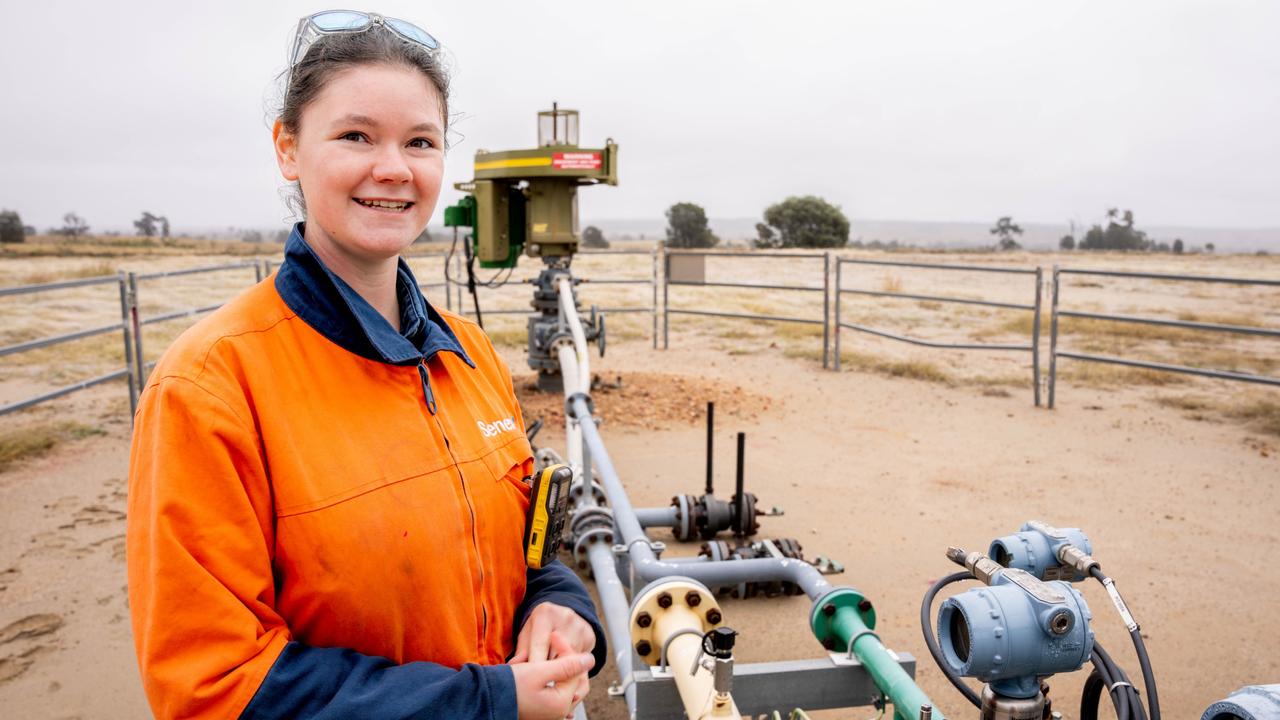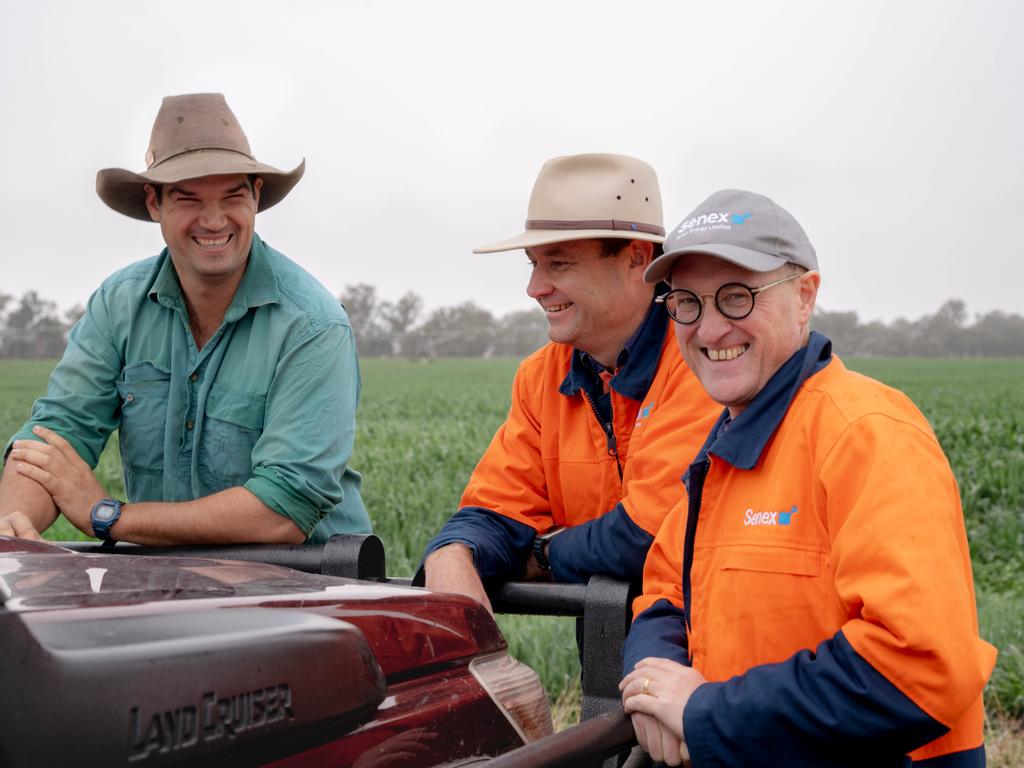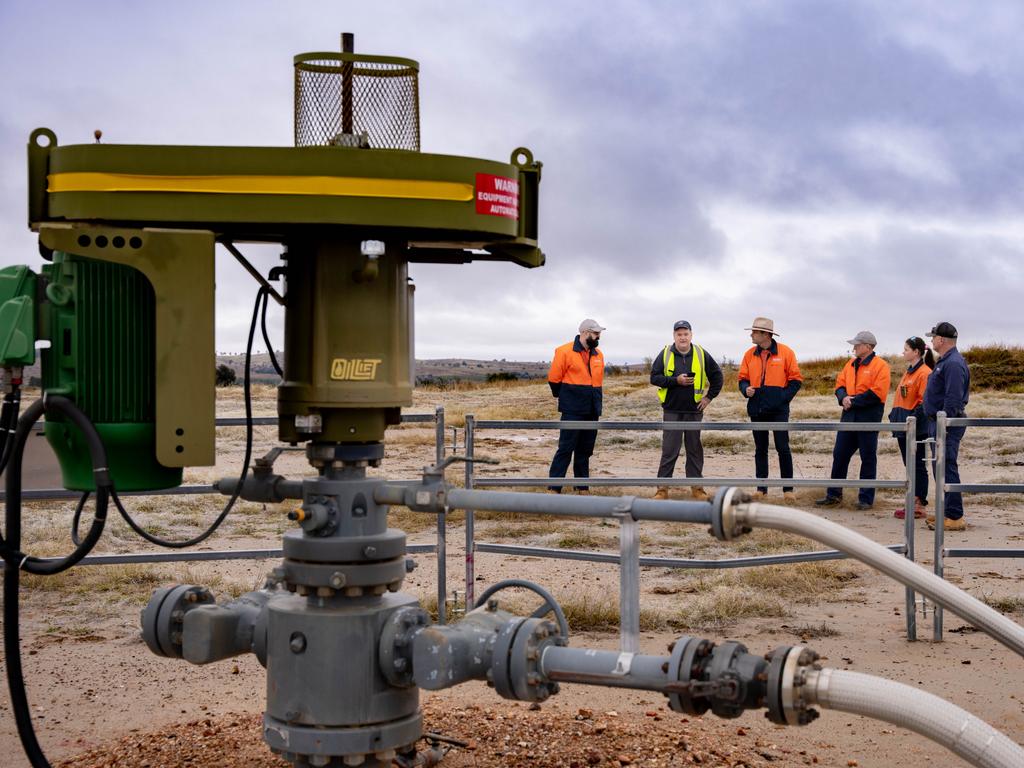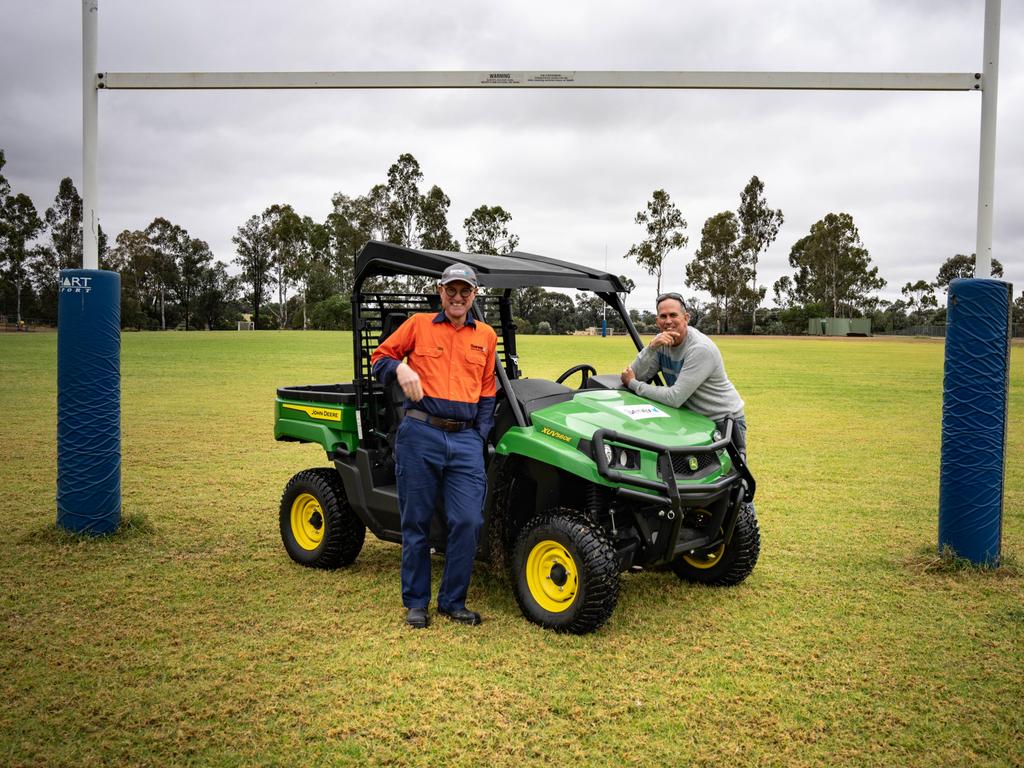Senex Qld gasfields a critical part of future energy generation
The Greens might not abide it, but even the federal Labor government sees a place for this fossil fuel in our future energy generation.

In a field outside Wandoan we appear to have stepped inside a landscape painting by that old Australian master Arthur Streeton.
It’s a handsome vista of rolling hills and grazing herds – a scene which inspired that once famous phrase “Australian Felix” (fortunate Australia) which early explorers used to describe the fertile areas of the interior.
This story is part of The Courier-Mail’s special Future Queensland: Resources series that reveals the truth about the contribution the much-maligned resources industry makes to Queensland.
The series is supported by Bravus, Whitehaven Coal, Queensland Resources Council, the Queensland Government, Senex, Coal Australia and Australian Energy Producers. You can read all of our coverage here
Yet here, 400km west of the state capital of Brisbane, we’re simultaneously in what might be termed the ground zero of the Queensland gas industry.
Dotted across hundreds of hectares are these curious-looking (at least to the uninitiated) installations that reside on what appear to be large helicopter landing pads incorporating equipment which, in the aggregate, appears no larger than the size of a four-wheel-drive.
It’s all encased by a fence that keeps out curious cows, which are free to graze right next to it, and it hums away using the very energy it’s extracting from up to three-quarters of a kilometre beneath our feet.
Darren Stevenson, chief operating officer at Senex Energy and the man responsible for Senex’s operations in the Surat Basin, muses that, were we standing here 150 million years or so ago, the difference in our elevation would be up to 700m.

Since then, dead vegetation has gathered in mud, water and sediment, quarantined from the decomposition impacts of the atmosphere.
Over the ages, it became tightly compressed and compacted at high temperatures as the mountain above it grew higher, producing a global phenomenon which came to the attention of the first underground European miners who, in the 19th century, began bringing canaries into mines to detect its presence.
Gas may have been lethal to miners, but it swiftly became one of humanity’s greatest servants. Gas-fired electricity is now estimated to provide Australia with $5.591bn in economic activity, and the list of products produced by gas is too numerous to list – from fertilisers to ceramics, cement and bricks.
There are even brewing outfits that rely on gas piped from these fields into a myriad network of pipelines across the eastern seaboard, reaching as far as South Australia.
Stevenson, with decades experience in the gas industry, gazes at the tiny, energy self-sufficient plant quietly doing its work and shakes his head at the nomenclature often employed to describe his industry, especially by its opponents.
“Gas mining?” Stevenson declares, gesturing around him at the pasture. “When people talk about gas mining, to me that sends the wrong visual message. Does this look like a mine site to you?”

It doesn’t.
It looks like a grazing property, and that is what it still is, albeit a grazing property whose owners have received a substantial compensation payment from Senex for use of this land.
Some property owners in the area are also receiving something else which, arguably, represents more value to Australian primary producers than a fat compensation cheque – water. A few kilometres away from this gas plant Col Worsfold, a third-generation farmer, stands before a lush green paddock of oats sprawling across 40ha.
It was fed by the water Senex extracts to access gas.
These oats will be bailed and consumed by the family’s Santa Hereford-cross herd. Any excess will be sold as feed representing another income stream for the farm
It’s all part of a deal the Worsfold family have with Senex and, to Col, it’s one of the best deals a grazier could imagine.
“For us, it’s a bit like winning the lottery,” says Worsfold.
“To get a reliable supply of water is a big win for anyone out this way.”
Australians can be slightly confused about gas. It’s perceived in some quarters as the good guy in the villainous world of fossil fuels because of its lower emissions rates.
The Australian Greens hate it, insisting it’s a key factor in climate change, but the federal Labor government clearly view it with a far more tolerant eye than it does the coal industry.

Last May, the federal government released a new policy which that a place for gas in the nation’s energy mix beyond 2050, and last month Environment Minister Tanya Plibersek approved plans to build more than 120 new gas wells in southern Queensland in a project Senex says will create more than 900 jobs in the state.
Senex Energy, owned by Australian billionaire Gina Rinehart and South Korean steelmaker Posco International, has jumped through quite a few regulatory hoops in recent years to finally get moving on its $1bn plan to expand its gas fields near Wandoan.
Senex Energy CEO, Ian Davies, says the Commonwealth approval means the lights are turning green for his company.
“We now have the necessary investment confidence and regulatory approvals to proceed with our expansion and deliver sorely needed natural gas supply to the east coast market,” he said.
In the Wandoan Cafe and Coffee Shop, Greg Zillman, grazier, local identity and head of the P&C who played rugby league with Darren Lockyer as a boy, insists we take a drive over to the school where Lockyer learned the football trade on the school oval.
It’s green, even in winter, and this little oasis of a playing field which has been part of the town since 2019 is largely there because of Senex.

In 2019 the company, through two parcels of $25,000 donations, helped bring in the turf from Toowoomba to create the oval.
The turf was laid by community members who turned out in droves, waiting in nervous expectation for it to take hold before a shower of rain sealed the deal.
To Zillman, Senex is something of a godsend to the district he grew up in.
He left the place when he was a younger man to make his way in the big smoke of Brisbane and stayed away for many years.
But, married with a growing family, he wanted his kids to grow up with the country values he learned, and returned to the family grazing property and a style of life embedded in his DNA. He’s branding cattle the next day, and looking forward to it provided it doesn’t rain.
But Zillman acknowledges primary industry isn’t enough to keep his community safe from the peaks and troughs of drought, fire, flood and cattle price. Senex, he says, provides not only employment.
The company is a strong advocate for a community which has a demonstrated capacity to take care of its own, but sometimes needs a helping hand.
“They understand us, they support us and they have become a part of our community,” he says. “You won’t hear too many people out here complaining about the gas industry.”




